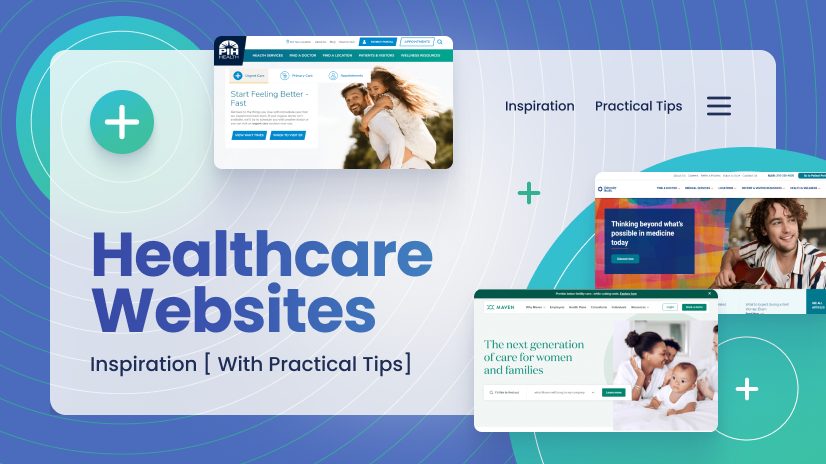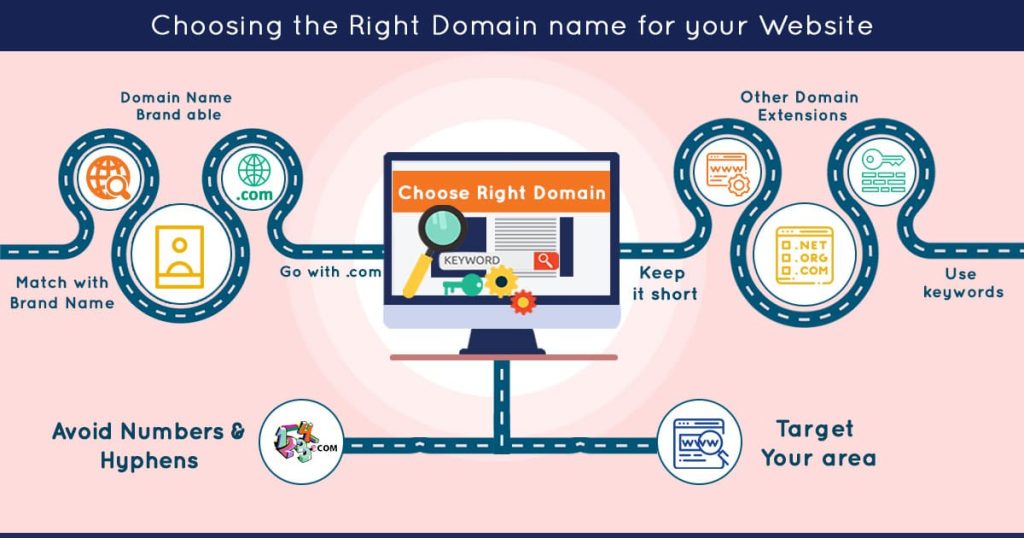How to Build a Website That Boosts Your HealthCare Center
Building a website for healthcare or medical business is now mandatory to expanding your patient base, sustaining trust, and streamlining your operations. In the contemporary environment, the strong development of competition in the Healthcare industry is a proper reason to perform healthcare center promotion in the web environment. In this article, let’s discuss what you should know to create a website that will benefit your healthcare center and your clients.
Outline
| Section | Description |
|---|---|
| Introduction | How to design a website that grows with your healthcare center. |
| Understanding the Importance of a Website for Health Care | Benefits of an online presence for healthcare providers. |
| Planning Your Healthcare Website | Key factors to consider before you start building your website. |
| Choosing the Right Domain Name | How to select a memorable and professional domain name. |
| Designing a User-Friendly Interface | Ensuring a seamless user experience for all visitors. |
| Mobile-First Design for Healthcare Websites | Why mobile responsiveness is essential for healthcare websites. |
| HIPAA Compliance and Security | Best practices for maintaining patient confidentiality online. |
| Integrating Patient Portals | The importance of secure patient portals for appointment bookings and more. |
| Search Engine Optimization (SEO) for Healthcare Websites | SEO tips to improve search rankings and attract local patients. |
| Content Strategy for Healthcare Websites | Crafting valuable and informative content for your audience. |
| Creating a Blog to Engage Patients | How a blog can serve as a patient engagement tool. |
| Appointment Scheduling Integration | How to seamlessly integrate online appointment systems. |
| Telemedicine Integration for Virtual Care | The role of telemedicine and how to integrate it into your website. |
| Patient Testimonials and Reviews | How to display and manage patient reviews on your site. |
| Building Trust with Doctor Profiles | Why detailed profiles of doctors build patient confidence. |
| Contact Information and Location Details | Making it easy for patients to find and contact you. |
| Accessibility Features for All Patients | Ensuring your website is accessible to users with disabilities. |
| Ensuring Fast Load Times | Techniques to improve website speed and performance. |
| Integrating Social Media Links | Leveraging social media for patient outreach and brand building. |
| Creating an FAQ Section for Patients | Addressing common questions and concerns with an FAQ section. |
| Building an Email Newsletter Signup | Encouraging patient engagement through email newsletters. |
| Analytics and Tracking for Continuous Improvement | Using data to measure website performance and patient behavior. |
| Ensuring Your Website is Scalable | How to design a website that grows with your healthcare centre. |
| Legal Disclaimers and Privacy Policies | Important legal notices to include on your healthcare website. |
| Choosing the Right Hosting Provider | Selecting the best hosting service for a reliable website. |
| Maintaining and Updating Your Website | Regular maintenance to ensure security and up-to-date information. |
| Conclusion | Summary of steps for building a healthcare website that delivers results. |
| FAQs | Common questions about building healthcare websites and their solutions. |
Understanding the Importance of a Website for Health Care

In the modern world, there can be nothing more essential than having a website to present your healthcare center. Patients can look for doctors, read about doctors, or even make appointments with doctors over the internet. Your website is generally the initial touch point between you and prospective patient(s) and your site must appeal.
A healthcare website serves multiple purposes: The features included include access to information, appointment scheduling, provision of online services including telemedicine, and education of patients. Besides, it will increase your ranking in local search engine decision-making, enhance trust from the patients, and in effect cause the growth of your healthcare practice.
Planning Your Healthcare Website

Often, design and development initiatives appear to run rampant before adequate planning occurs. The goals of your website should be clear: Do you want to enhance engagement with patients? Would you like to cut down on paperwork and make it automated? Begin by identifying how your patients may use your website, and what they may wish to obtain from it, for instance booking an appointment, viewing their records, or articles on healthcare issues.
Think about your clients and the services you are interested in providing in the beginning. It will allow you to decide what kind of functionalities would have the most positive impact on and inform the structure of the site as well as the content.
Choosing the Right Domain Name

Often your domain name will be a part of your corporate image on the Internet. Especially, when it comes to professional and memorable domains, the distinctions can be quite noticeable. In any case, your domain should better reflect the name of your healthcare center or a keyword associated with the offered services. The name should be readily spelled, pronounced, and easy to memorize.
Hence we recommend that your location should also be in the domain name for improved local SEO benefits especially if it’s a healthcare center.
Designing a User-Friendly Interface
A website that is created for healthcare should be easy to use with little to no confusion when it comes to guiding users to the information they want to access. A patient will be scared off by a complex website while the same patient will be captivated by a RTLS website.
Make sure your menu is labeled plainly and straightforward and that customers can locate your contact details, services, and how-to book appointment buttons. Strictly focusing on a user and providing continuous integration with various devices is pertinent, especially since the number of people who use the Internet on their smartphones continues to grow.
Mobile-First Design for Healthcare Websites
Designing a mobile-first is no longer a fad; it is now a requirement. Since a large proportion of the visitors are likely to be accessing your healthcare sites via their tiny screens, you need to have your website fully responsive. This means shorter access time, more elastic layouts, and navigation options including online appointments, or patients’ accounts.
Mobile-friendliness is also a ranking factor at Google, so implementing this design strategy will increase your healthcare center’s SEO ranking.
HIPAA Compliance and Security
Indeed, as the focus of this article – a healthcare website – will show, HIPAA cannot be disregarded when developing Internet-based platforms in healthcare. This law demands protection of patient information and any site that handles such information is bound to have very high levels of security.
Make sure your website has SSL encryption, have it scanned frequently for vulnerabilities, and only use secure patient portals. These steps assist in safeguarding the patient data as well as ensuring that your site is a legal complaint.
Integrating Patient Portals
A patient portal can be considered a must-have element integrated into the website of a contemporary healthcare organization. Get appointments, patients’ records, and test results, and even communicate with the doctors and specialists through a secure channel. The incorporation of a pleasant and secure portal will highly improve the satisfaction of patients and change the dynamics in the practice.
Search Engine Optimization (SEO) for Healthcare Websites
Visibility of your healthcare website to potential patients is made possible through SEO. First, it’s a good idea to focus on local keyword search requests using something like ‘healthcare center in [city]’ or ‘family doctor nearby.’
Also, make sure each page is unique in its meta descriptions and title tags or headings. Place heading and utilize keywords properly, relevant to the topic. It will also enhance your search engine ranking since backlinks from other reliable healthcare sites will also be desirable.
Content Strategy for Healthcare Websites
This is a clear indication that content is king for patient engagement and SEO purposes. The idea is that a healthcare website has to offer valuable and useful information for the patients. Information about such things as prevention, treatment, and health tips can help make the site authoritative.
Embed relevant keywords into your content naturally, and use images, infographics, and videos if possible to fit the content. Another great way to increase traffic, as well as patient engagement, is to have a well-developed blog that addresses most of the frequently asked questions concerning healthcare.
Creating a Blog to Engage Patients
A blog proves to be a great way to share more information with your patients and get them involved. In discussing such issues as nutrition, treatment of various diseases, or new forms of therapy, you bring benefits unrelated to a simple clinic visit. Also, new and fresh blogs help increase SEO because search engines rank websites that come up with new content frequently.
FAQs
How can I make sure my healthcare website is HIPAA-compliant?
Make sure you’re using SSL encryption, and have patient portals that have proper security protocols and are updated regularly.
What are the essential features of a healthcare website?
Some of the important components are the patient’s self-portal, calendar of appointments, the site’s responsiveness to mobile devices, and easily noticeable contact details.
Do I need a blog for my healthcare website?
Yes, a blog is highly effective in enhancing patient interaction and moving your website up in SERP by consistently posting new content.
Why is mobile optimization so important for healthcare websites?
A significant portion of the population uses a smartphone to surf the internet and seek healthcare services, so it’s essential for site design besides SEO.
What kind of content should a healthcare website have?
Some of the elements of useful information are service descriptions, patient guides, informational blogs, and easily noticeable contact information.
How do I choose the right domain name for my healthcare center?
Choose a name that sounds corporate, memorable, and has something to do with your geographical area or area of focus to boost your site ranking in the local search results.
Conclusion
Creating a healthcare website that enhances the visibility of your center and attracts the attention of patients is a strategic process that requires proper planning of the site’s design, compliance with HIPAA rules, and the creation of a strong backbone.
Content strategy. By following this ultimate checklist you will be able to create a wonderful website that will attract patients and at the same time allow patients to have a comfortable and secure means of spending their time online.
#How to Build a Website That Boosts Your HealthCare Center,#How to Build a Website That Boosts Your HealthCare Center,#How to Build a Website That Boosts Your HealthCare Center,#How to Build a Website That Boosts Your HealthCare Center,#How to Build a Website That Boosts Your HealthCare Center,#How to Build a Website That Boosts Your HealthCare Center,
#How to Build a Website That Boosts Your HealthCare Center,#How to Build a Website That Boosts Your HealthCare Center,#How to Build a Website That Boosts Your HealthCare Center,#How to Build a Website That Boosts Your HealthCare Center,#How to Build a Website That Boosts Your HealthCare Center,#How to Build a Website That Boosts Your HealthCare Center,
#How to Build a Website That Boosts Your HealthCare Center,#How to Build a Website That Boosts Your HealthCare Center,#How to Build a Website That Boosts Your HealthCare Center,#How to Build a Website That Boosts Your HealthCare Center,#How to Build a Website That Boosts Your HealthCare Center,#How to Build a Website That Boosts Your HealthCare Center,









